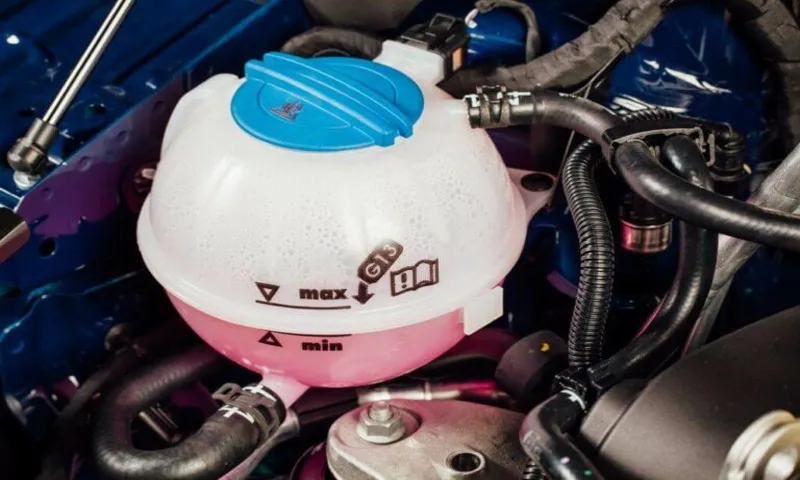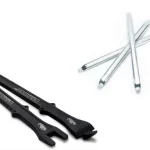Do you own a vehicle? If so, then you probably know the importance of maintaining its various components. One such component is the coolant, which plays a crucial role in keeping your engine cool and preventing overheating. But have you ever wondered how long coolant lasts once it’s been opened? When you open a bottle of coolant, its lifespan can be affected by various factors.
Firstly, exposure to air can cause the coolant to oxidize, leading to a decrease in its effectiveness. Additionally, the introduction of contaminants such as dirt or debris can further degrade the coolant’s performance. The shelf life of an opened bottle of coolant can also be influenced by the type of coolant you’re using.
Different coolants have different formulations and additives, which affect their longevity. For example, some coolants are designed to last for up to five years, while others may need to be replaced after only two years. Taking proper storage measures can also help extend the lifespan of an opened bottle of coolant.
It’s essential to store the coolant in a cool, dry place away from direct sunlight and extreme temperatures. This will help minimize the degradation caused by heat and exposure to light. To determine the exact longevity of your coolant, it’s best to consult the manufacturer’s recommendations.
They will provide you with specific guidelines on how long their product can be safely used after opening. It’s crucial to follow these guidelines to ensure optimal performance and to prevent any potential damage to your engine. In conclusion, the lifespan of an opened bottle of coolant can vary depending on various factors such as exposure to air, contaminants, and the type of coolant used.
By taking proper storage measures and following the manufacturer’s recommendations, you can ensure that your coolant remains effective for as long as possible. So, next time you open a bottle of coolant, remember to check its expiration date and store it correctly to keep your engine running smoothly and efficiently.
Table of Contents
Introduction
Ever wondered how long coolant lasts once it’s been opened? Well, it’s an important question to ask because the longevity of coolant can directly impact the performance and lifespan of your vehicle. Generally, most coolants can last up to five years if they remain unopened. However, once the bottle has been opened, the clock starts ticking.
Depending on the brand and type of coolant, the shelf life of an opened bottle can vary. Some coolants may last for only a few months, while others can last up to two years. It’s important to check the manufacturer’s guidelines to determine the specific shelf life of your coolant.
Additionally, factors such as temperature, exposure to air, and contamination can also affect the lifespan of coolant once it’s opened. Ultimately, it’s recommended to regularly inspect and replace your coolant to ensure optimal performance and protect your vehicle’s engine from potential damage.
What is coolant?
coolant

Importance of coolant in vehicles
coolant, vehicles
Coolant Shelf Life
Once opened, the shelf life of coolant can vary depending on the type and brand. Generally, coolant can last for about two to three years once the seal is broken. However, it is important to note that coolant can degrade over time, especially if exposed to air and moisture.
This can lead to a decrease in its effectiveness in preventing corrosion and providing proper cooling for your engine. It’s always a good idea to check the expiration date on the container and replace coolant that is past its prime. Additionally, storing coolant in a cool, dry place can help extend its shelf life.
So, the next time you crack open a bottle of coolant, make sure to keep track of how long it’s been since you opened it so you can ensure optimal performance for your vehicle.
Factors influencing coolant shelf life
coolant shelf life, factors influencing coolant shelf life Coolant shelf life refers to the period of time during which a coolant can be stored and used before it becomes ineffective or potentially harmful to the machinery it is meant to protect. Several factors can influence the shelf life of coolant, including its formulation, storage conditions, and pollution levels. The formulation of the coolant plays a significant role in determining its shelf life.
Coolants are typically made up of a mixture of chemicals and additives that help regulate their temperature and protect the machinery from corrosion and wear. The quality and concentration of these chemicals can vary, with some formulations offering longer shelf life than others. Additionally, the presence of certain additives, such as biocides, can help extend the shelf life by preventing the growth of bacteria and fungi that can degrade the coolant.
Storage conditions are another crucial factor affecting coolant shelf life. Coolants should be stored in a cool, dry place away from direct sunlight. Exposure to heat and moisture can cause chemical reactions that can reduce the effectiveness of the coolant.
Extreme temperatures can also cause the coolant to break down, leading to the formation of harmful byproducts that can damage the machinery. Therefore, it is essential to store coolant in sealed containers and protect it from temperature fluctuations and exposure to water or other contaminants. Pollution levels can also impact the shelf life of coolant.
Contaminants, such as dirt, debris, and metal shavings, can enter the coolant system from the environment or as a result of wear and tear on the machinery. These pollutants can react with the coolant, causing it to degrade and lose its effectiveness over time. Regular maintenance and filtration of the coolant system can help reduce pollution levels and extend the shelf life of the coolant.
In conclusion, several factors influence the shelf life of coolant. The formulation of the coolant, storage conditions, and pollution levels all play a role in determining how long a coolant can be stored and used effectively. By understanding and managing these factors, machinery operators can ensure that their coolant remains in optimal condition, protecting their equipment and maximizing its lifespan.
Typical shelf life of coolant
coolant shelf life Every car owner knows the importance of keeping their vehicle’s coolant system in top condition. Coolant, also known as antifreeze, is a crucial component that helps regulate the engine’s temperature and prevent it from overheating. But have you ever wondered about the shelf life of coolant? How long can you keep that bottle of coolant sitting on your garage shelf before it goes bad? Well, the good news is that most coolant manufacturers design their products to have a relatively long shelf life.
On average, coolant can last for about 2 to 5 years if stored properly. However, it’s essential to note that the shelf life can vary depending on various factors such as the brand, type of coolant, and storage conditions. Coolant shelf life can be influenced by factors such as temperature, exposure to air, and contamination.
Extreme temperatures can cause the coolant to degrade faster, potentially reducing its effectiveness. It’s best to store coolant in a cool, dry place away from direct sunlight or excessive heat. Exposure to air is also a significant factor that can affect coolant shelf life.
Coolant contains additives that help prevent corrosion and rust formation within the cooling system. If the coolant is exposed to air, these additives can break down, rendering the coolant ineffective. Therefore, it’s crucial to seal the bottle tightly after use and avoid leaving the bottle open for an extended period.
Contamination is another factor that can impact coolant shelf life. When coolant comes into contact with water, dirt, or other contaminants, it can become contaminated. Contaminated coolant can lead to problems such as poor engine performance or even engine damage.
It’s crucial to store coolant in a clean environment and avoid using bottles that may have been contaminated. To ensure that your coolant is still effective, it’s recommended to check the color of the liquid regularly. Fresh coolant is typically bright, vibrant, and translucent.
Signs of expired coolant
“signs of expired coolant” Coolant Shelf Life When it comes to maintaining your vehicle, one important aspect that is often overlooked is the shelf life of coolant. Just like any other product, coolant has an expiration date. Over time, coolant can break down and lose its effectiveness in cooling your engine.
But how do you know when your coolant has reached its expiration date? One of the first signs of expired coolant is a change in color. Fresh coolant is usually a bright color, like green, blue, or orange. However, as it ages, it can start to turn brown or even black.
This discoloration is a clear indication that the coolant is no longer in its prime condition. Another sign to look out for is a pungent smell. Fresh coolant has a distinct odor, but as it goes bad, it can develop a strong, unpleasant smell.
This can be a warning sign that the coolant has become contaminated or has started to break down chemically. Additionally, you may notice a decrease in the effectiveness of your cooling system. If your engine is running hotter than usual or you see signs of overheating, it could be a result of expired coolant.
When coolant breaks down, it is not able to properly regulate the temperature of the engine, leading to potential overheating issues. It’s important to keep in mind that the shelf life of coolant can vary depending on the brand and type of coolant used. Most manufacturers recommend changing the coolant every two to five years, but it’s always a good idea to check your vehicle’s owner’s manual for specific guidelines.
Regularly inspecting your coolant for signs of expiration can help prevent costly damage to your engine and keep your vehicle running smoothly.
Storage and Handling of Coolant
Once you open a container of coolant, how long can you expect it to last? Well, the shelf life of coolant can vary depending on a few factors. Generally, if the coolant is stored properly in a cool, dry place away from direct sunlight, it can last for up to two years. However, it’s important to note that coolant can degrade over time, especially when exposed to extreme temperatures or contaminants.
So, if you notice any changes in the color or consistency of the coolant, it’s best to replace it. Additionally, always check the manufacturer’s instructions for specific guidelines on storage and handling of coolant.
Proper storage of coolant
coolant, storage, handling, burstiness, long-term storage, proper storage Proper storage and handling of coolant is crucial to ensure its effectiveness and longevity. When it comes to coolant, it’s important to remember that it is a chemical solution that can deteriorate over time if not stored properly. The first step in storing coolant is to make sure it is in a tightly sealed container.
This will prevent any contamination or evaporation of the coolant. Additionally, it’s essential to keep coolant away from direct sunlight and extreme temperatures. Exposure to heat and light can cause the coolant to lose its effectiveness and break down.
Moreover, it’s important to store coolant in a cool, dry place to avoid any moisture buildup. Moisture can lead to the growth of bacteria or fungi, which can contaminate the coolant and render it useless. Finally, it’s crucial to remember to label the coolant container with the date of purchase or the date it was first used.
This will help you keep track of the coolant’s shelf life and ensure you are using it within its recommended time frame. By following these simple storage and handling guidelines, you can ensure that your coolant will remain in optimal condition for a longer period of time.
Tips for handling coolant
coolant, storage, handling Coolant is an essential component in many industries and is primarily used to regulate temperatures and prevent overheating in machinery and equipment. However, proper storage and handling of coolant is crucial to ensure its effectiveness and prevent any potential hazards. When it comes to storing coolant, it is important to keep it in a cool and dry area, away from direct sunlight and heat sources.
This helps to prevent degradation of the coolant and maintain its optimal performance. Additionally, it is important to use suitable containers for storing coolant, such as sealed plastic or metal containers, to prevent contamination and evaporation. When handling coolant, it is essential to wear proper protective gear, such as gloves and goggles, to prevent skin contact and eye irritation.
It is also important to follow the manufacturer’s instructions and guidelines for handling and disposing of coolant safely. By taking the necessary precautions and following proper storage and handling procedures, you can ensure the longevity and effectiveness of coolant, while also prioritizing safety in the workplace.
Conclusion
In the ever-evolving world of automotive fluids, the question of how long coolant lasts after being opened has plagued DIY mechanics and professionals alike. Like a fine wine, coolant cannot be taken at face value – it has its own unique expiration date. Once that precious seal is broken, coolant begins a transformation that would make Jekyll and Hyde proud.
You see, coolant is a delicate balance of chemicals and wonders, designed to keep your engine running at the ideal temperature. Once it meets the open air, however, its true colors begin to emerge. It starts to lose its potency, its vibrant color fading into a lackluster hue.
Like a superhero without their cape, coolant loses its power to protect against engine corrosion and overheating. But fear not, fellow gearheads, for there is hope! While the coolant might lose its magical properties, it doesn’t immediately turn into a pumpkin at midnight. With proper care and attention, coolant can still serve a purpose – albeit a diminished one.
It may not be as effective in preventing overheating or corrosion, but it can still provide some level of cooling for a limited time. So, how long does coolant last once opened? Well, my friend, that is the million-dollar question. It depends on a variety of factors such as the specific brand, storage conditions, and the alignment of the planets.
Okay, maybe not the last one, but you get the idea. As a general rule of thumb, it’s best to use opened coolant within a year of opening the bottle. After that, it’s like playing Russian roulette with your engine – you never know when the coolant might lose its effectiveness, leaving your engine vulnerable to the fiery depths of overheating.
In conclusion, while coolant may lose its superpowers after being opened, it doesn’t transform into a useless potion overnight. Treat it with caution, use it within a reasonable timeframe, and remember that even a diminished coolant can still provide some relief to your engine’s fiery woes. Just don’t go expecting it to work miracles – after all, it’s not a wizard’s potion or a genie’s magic lamp.
FAQs
How long does coolant last once opened?
How long can I store coolant once it has been opened?
Once coolant has been opened, it can be stored for up to 2 years if properly sealed and stored in a cool, dry place.
Can coolant go bad if left unused?
Yes, coolant can go bad if left unused for an extended period of time. It is recommended to use it within 2 years of opening to ensure its effectiveness.
How can I tell if coolant has expired?
You can check the expiration date printed on the coolant bottle. If there is no expiration date, you can look for signs such as unusual odor, color change, or sedimentation, which may indicate that the coolant has expired.
What happens if I use expired coolant?
If expired coolant is used, it may not provide effective cooling and corrosion protection. It can also lead to engine overheating and potential damage.
How should unused coolant be stored to maximize its lifespan?
Unused coolant should be stored in a tightly sealed container in a cool, dry place. Exposure to moisture, extreme temperatures, and direct sunlight should be avoided.
Can I mix new coolant with old coolant?
It is generally recommended to avoid mixing new coolant with old coolant, as this can affect its performance and compromise the engine’s cooling system. It is best to flush the old coolant before adding new coolant.
Can I reuse coolant from my old vehicle in a new one?
It is not recommended to reuse coolant from an old vehicle in a new one, as the composition and condition of the coolant may vary. It is best to use fresh coolant that is compatible with the new vehicle’s specifications.
How often should coolant be replaced? A8. Coolant should be replaced according to the manufacturer’s recommended interval, which can vary depending on the specific vehicle. On average, coolant should be replaced every 2 to 5 years or every 30,000 to 50,000 miles.
Can I mix different brands of coolant?
It is generally recommended to avoid mixing different brands of coolant, as they may have different chemical compositions that can react negatively and compromise the cooling system’s performance. It is best to use coolant from the same brand or follow the manufacturer’s recommendations.
How can I dispose of coolant safely?
Coolant should be disposed of properly to avoid environmental pollution. It should not be poured down the drain or onto the ground. Local recycling facilities or automotive service centers may accept used coolant for proper disposal.



